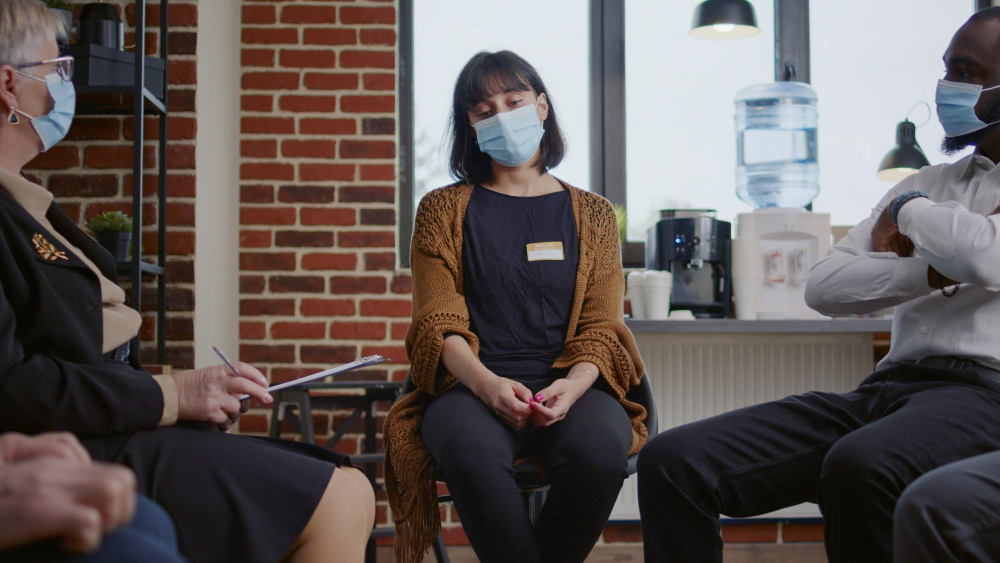Fentanyl Laced Heroin is Killing Addicts
July 18, 2024
The lethal reality of fentanyl-laced heroin: Unveiling the risks, effects, and urgent responses to save lives.

The Impact of Fentanyl-Laced Heroin
The rise of fentanyl-laced heroin has had a devastating impact on communities struggling with addiction. Fentanyl, a synthetic opioid, has played a significant role in the overdose crisis, leading to a surge in overdose deaths. Understanding the connection between fentanyl and heroin is crucial in addressing this ongoing public health crisis.
Fentanyl's Role in Overdose Crisis
Fentanyl, a potent opioid that is up to 100 times stronger than morphine, has emerged as a major contributor to the overdose crisis. In Canada, high rates of overdoses have been attributed to factors such as fentanyl-laced heroin [1]. This powerful drug is often mixed with heroin, leading to a lethal combination that increases the risk of overdose. The presence of fentanyl in street drugs has led to a sharp rise in overdose deaths, as users may unknowingly consume a substance that is far more potent than expected.
Synthetic Opioids and Overdose Deaths
Synthetic opioids, including fentanyl, have become the most common drugs involved in drug overdose deaths in the United States. According to the Centers for Disease Control and Prevention (CDC), synthetic opioids, including fentanyl, were responsible for the majority of overdose deaths in the United States in recent years [3]. These synthetic opioids are often illegally manufactured and distributed, making them easily accessible in the illicit drug market.
Illicit fentanyl, primarily produced in foreign clandestine labs and smuggled into the United States, is being distributed across the country and mixed with other illicit drugs to increase their potency. It is sold as powders, nasal sprays, and even pressed into pills made to look like legitimate prescription opioids. However, these counterfeit pills often contain lethal doses of fentanyl, putting users at a high risk of overdose [3].
The impact of fentanyl-laced heroin is not limited to the United States. In Canada, as well as other countries facing the opioid crisis, fentanyl-laced heroin has contributed to a significant increase in overdose deaths. The distribution and availability of fentanyl on the illegal drug market have made it a major public health concern.
To address the crisis, it is crucial to raise awareness about the dangers of fentanyl-laced heroin and work towards expanding access to addiction treatment, harm reduction strategies, and naloxone, an antidote that can reverse opioid overdoses. By understanding the impact of fentanyl-laced heroin, communities can take steps to prevent overdose deaths and provide support to individuals struggling with addiction.
Understanding Fentanyl
To comprehend the dangers associated with fentanyl-laced heroin, it is crucial to understand the mechanism of action of fentanyl as well as the risks of fentanyl contamination.
Mechanism of Action
Fentanyl is a powerful synthetic opioid that works by binding to the body's opioid receptors in the brain, affecting areas that control pain and emotions. It is approximately 50 to 100 times more potent than morphine and can rapidly produce intense euphoria. With prolonged use, the brain adapts to the drug, making it difficult to feel pleasure from anything besides the drug, leading to addiction.
Risks of Fentanyl Contamination
One of the concerning aspects of fentanyl-laced heroin is the significant risk of contamination. Illicit fentanyl, primarily manufactured in foreign clandestine labs and smuggled into the United States through Mexico, is being distributed across the country and sold on the illegal drug market. Drug dealers mix fentanyl with other illicit drugs, including heroin, methamphetamine, and cocaine, to increase their potency. This practice significantly increases the likelihood of a fatal interaction.
The contamination of heroin with fentanyl poses a grave threat to users. Fentanyl overdose can lead to serious adverse effects, including slowed or stopped breathing, which can result in hypoxia, coma, permanent brain damage, and death. Due to its potency, even minute amounts of fentanyl can be lethal [4].
In recent years, counterfeit pills made to look like legitimate prescription opioids have also emerged in the illegal drug market. These pills often contain lethal doses of fentanyl, with none of the promised drug. Without laboratory testing, it is impossible to know the amount of fentanyl in an individual pill or how much may have been added to another drug. This lack of oversight and quality control makes it extremely dangerous for individuals who consume these counterfeit pills.
It is crucial to raise awareness about the risks associated with fentanyl-laced heroin and the potential contamination of other drugs with fentanyl. Understanding the mechanism of action and the grave consequences of fentanyl overdose can help individuals make informed decisions and seek help to overcome addiction.

Health Risks and Effects
The use of fentanyl-laced heroin poses significant health risks and can have devastating effects on individuals who use this dangerous combination.
Fentanyl Overdose Symptoms
Fentanyl is an extremely potent synthetic opioid that can lead to a higher risk of overdose and fatalities compared to other opioids. Overdose symptoms associated with fentanyl-laced heroin include:
- Slowed or stopped breathing
- Extreme drowsiness or sedation
- Confusion and disorientation
- Pinpoint pupils
- Loss of consciousness
- Blue lips or nails due to lack of oxygen
It's important to note that a fentanyl overdose can result in serious adverse effects, including slowed or stopped breathing, which can lead to hypoxia, coma, permanent brain damage, and death. If you suspect someone may be experiencing a fentanyl overdose, it is crucial to call 911 immediately to ensure they receive immediate medical attention. For more information on the mental and physical effects of heroin, visit our article on the mental and physical effects of heroin.
Naloxone as an Antidote
Naloxone is a medication that can be used to reverse opioid overdoses, including those involving fentanyl-laced heroin. It works by rapidly binding to opioid receptors in the brain, blocking the effects of the opioid drug and restoring normal breathing. Naloxone is a crucial tool in saving lives during opioid overdoses.
It is important to note that while naloxone can effectively reverse opioid overdoses, it may not be as effective against fentanyl and its analogues due to compromised breathing mechanisms that are not reversible by naloxone alone. Therefore, it is essential to seek immediate medical attention in suspected drug overdose situations, even if naloxone has been administered [5]. To learn more about the options available for treating heroin addiction, check out our article on people say this cures heroin addiction.
In the face of the fentanyl-laced heroin crisis, it is crucial to raise awareness about the health risks and potential fatal consequences of using this dangerous combination. Understanding the symptoms of a fentanyl overdose and having access to naloxone can save lives and provide an opportunity for individuals to seek the necessary help and support for overcoming addiction.
Illicit Fentanyl Distribution
The distribution of illicit fentanyl has become a significant concern in the ongoing battle against drug addiction and overdose deaths. This potent synthetic opioid is primarily manufactured in foreign clandestine labs and smuggled into the United States through Mexico. It is then distributed across the country and sold on the illegal drug market.
Manufacturing and Trafficking
Illicit fentanyl is mass-produced in foreign labs, with the Sinaloa Cartel and the Jalisco Cartel in Mexico being major players in its distribution. These cartels obtain the necessary precursor chemicals, primarily from China, to manufacture fentanyl in large quantities. The production process involves combining these chemicals to create the potent synthetic opioid.
Once manufactured, fentanyl is trafficked into the United States through various channels, including smuggling routes along the U.S.-Mexico border. The cartels employ sophisticated methods to transport the drug, often concealing it within legitimate shipments or using underground tunnels.
The scale of fentanyl trafficking is alarming. In 2021 alone, the Drug Enforcement Administration (DEA) seized over 20.4 million fake prescription pills, many of which contained lethal doses of fentanyl. In a nationwide operational surge, the DEA seized 10.2 million fake pills in just over three months, highlighting the extent of the problem and the efforts being made to combat the distribution of these dangerous pills.
Fentanyl-Laced Fake Prescription Pills
One concerning aspect of fentanyl distribution is the production and sale of fentanyl-laced fake prescription pills. These counterfeit pills are designed to resemble legitimate prescription opioids, such as OxyContin®, Percocet®, and Xanax®. The cartels are becoming increasingly adept at creating pills that look identical to the real medications.
These counterfeit pills are often sold on the illegal drug market, targeting individuals struggling with addiction. However, unlike legitimate prescription medications, these fake pills contain lethal doses of fentanyl, with none of the promised drug. This deceptive practice has contributed to the rise in overdose deaths among addicts and poses a significant threat to public health.
In 2020, nearly 4,000 people died due to fentanyl overdoses in California alone, with a surge in fentanyl-related deaths among young people. Fentanyl-related deaths for individuals aged 10-19 in California rose from 36 in 2018 to 261 in 2020, highlighting the devastating impact of these lethal counterfeit pills.
The distribution of fentanyl-laced fake prescription pills is a pressing issue that requires concerted efforts from law enforcement, healthcare providers, and communities to combat the opioid crisis and save lives. Increased awareness, prevention strategies, and access to treatment and support services are crucial in addressing this deadly epidemic.

Responding to the Crisis
In the face of the devastating impact caused by fentanyl-laced heroin, it is crucial to address the risks faced by first responders and provide them with the necessary support and guidance. The following sections focus on the risks faced by these individuals and the recommendations provided by the National Institute for Occupational Safety and Health (NIOSH).
First Responder Risks
Emergency responders, including EMS providers and law enforcement personnel, play a vital role in addressing drug-related incidents. However, their routine job duties put them at risk of coming into contact with a mixture of illicit drugs, including opioids like fentanyl and heroin. This exposure poses significant health risks, as fentanyl is highly potent and can be absorbed through inhalation, ingestion, or skin contact.
Law enforcement personnel involved in various activities, such as routine duties, investigations, evidence collection, special operations, and decontamination, may encounter illicit drugs like fentanyl during their work, increasing the risk of exposure [5]. It is crucial to prioritize the safety and well-being of these dedicated individuals who put their lives on the line to protect and serve the community.
NIOSH Recommendations
To address the risks faced by first responders, NIOSH has developed a toolkit that provides training on preventing exposures to illicit drugs, including fentanyl. The toolkit offers recommendations on safe operating procedures and the use of personal protective equipment (PPE) when responding to incidents involving illicit drugs.
Some of the key recommendations provided by NIOSH include:
- Training and Education: First responders should receive comprehensive training on the hazards associated with fentanyl and other illicit drugs. This training should include information on safe practices, recognizing and responding to exposures, and proper use of PPE.
- Personal Protective Equipment (PPE): First responders should wear appropriate PPE, such as gloves, eye protection, and respiratory protection, when there is a potential for exposure to fentanyl or other illicit drugs. The selection of PPE should be based on the specific tasks and potential exposure routes.
- Decontamination: Proper decontamination procedures should be followed after potential exposure to fentanyl or other illicit drugs. This includes safely removing contaminated clothing and equipment, cleaning exposed areas of the body, and disposing of contaminated materials appropriately.
- Collaboration and Communication: Effective communication and collaboration between different agencies and departments involved in responding to drug-related incidents are crucial. This ensures a coordinated approach to minimize risks and provide the necessary support to first responders.
By implementing these recommendations and prioritizing the safety of first responders, we can mitigate the risks associated with fentanyl-laced heroin and support those on the front lines of this crisis. Their dedication and bravery deserve our utmost respect and protection.
Explore our articles for a more captivating read on What Type of Drug is Heroin?, The Mental and Physical Effects of Heroin, Caught Up In the Heroin Epidemic and People Say This Cures Heroin Addiction.
The Lethality of Fentanyl
Fentanyl, a highly potent synthetic opioid, has emerged as a deadly threat in the realm of illicit drugs. Understanding the potency and adverse effects of fentanyl, as well as the role of cartels in trafficking it, is crucial in addressing the devastating impact it has on addicts.
Potency and Adverse Effects
Fentanyl is an incredibly powerful opioid. It is estimated to be 50 times more potent than heroin and 100 times more potent than morphine. To put this into perspective, just two milligrams of fentanyl, equivalent to the small amount that fits on the tip of a pencil, is considered a potentially deadly dose [6].
The adverse effects of fentanyl use are severe and can include respiratory depression, sedation, and even death. Due to its potency, individuals who unknowingly consume fentanyl-laced substances, such as heroin, are at a significantly higher risk of overdose. In fact, the CDC reported that in 2021, 66 percent of the 107,622 drug poisoning deaths in the U.S. involved synthetic opioids like fentanyl, making it the deadliest drug threat in the country.
Fentanyl Trafficking by Cartels
The trafficking of fentanyl is largely driven by cartels, with the Sinaloa Cartel and Jalisco Cartel in Mexico being significant players in the distribution of this dangerous substance. These cartels obtain the necessary precursor chemicals, often from China, to mass-produce fentanyl and its analogs. They then smuggle these drugs into the United States, flooding American communities with lethal doses of fentanyl-laced substances.
Of particular concern is the production and distribution of fentanyl-laced fake prescription pills. These cartels have been found to manufacture pills that closely resemble legitimate prescription medications like OxyContin®, Percocet®, and Xanax®. This deceptive packaging contributes to the rise in overdose deaths among addicts, who may unknowingly consume these deadly counterfeit pills.
The scale of the issue is staggering. In 2021 alone, the DEA seized over 20.4 million fake prescription pills. In a nationwide operational surge targeting the trafficking of fentanyl-laced fake prescription pills, the DEA seized an additional 10.2 million fake pills in just over three months, highlighting the extensive efforts being made to combat the distribution of these lethal pills.
The proliferation of fentanyl-laced substances, driven by cartels and their distribution networks, has resulted in a sharp increase in the lethality of these drugs. It is crucial for law enforcement agencies, healthcare professionals, and communities to work together to combat the trafficking of fentanyl and raise awareness about its lethal consequences.
References
Learn About Clear Steps Recovery and How We Can Help You
Once you reach out to Clear Steps Recovery, your path becomes clear, and you can get the help and support you need to break the cycle of addiction. Our serene woodland environment promotes physical, mental, emotional, and spiritual healing.
Call today or contact us online to get started.
The Path Is Clear – Take Your First Steps Today with Clear Steps Recovery
With our team and your desire to heal, we can improve your quality of life and functional abilities, so you can get back to living your best life.
































.jpg)


















.jpg)
.jpg)















































